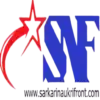The Art of Questioning: Mastering the Skill for Effective Communication
This article provides official government job recruitment details including vacancies, eligibility, application process, important dates, and selection process.

In the realm of effective communication, the ability to ask the right questions is an invaluable skill. This “art of questioning” goes beyond simply seeking information; it involves understanding the nuances of human interaction, fostering deep conversations, and unlocking insights that can drive personal and professional growth. In this comprehensive guide, we will explore the principles of effective questioning, the different types of questions, and practical strategies to enhance your questioning skills.
Understanding the Art of Questioning
At its core, questioning is a fundamental aspect of communication that enables individuals to gather information, clarify understanding, and stimulate critical thinking. However, questioning involves much more than just asking questions; it requires a nuanced approach to ensure that questions are insightful, purposeful, and conducive to meaningful dialogue.
Bloom’s Taxonomy of Critical Thinking Skills
To master the art of questioning, it is essential to understand the framework of Bloom’s Taxonomy. Bloom’s Taxonomy categorizes cognitive skills into different levels, from basic recall of facts to higher-order thinking. These levels guide the formulation of questions that promote deeper understanding and critical analysis.
- Remembering: Questions at this level focus on recalling basic facts and information. Example: “What are the main components of a cell?”
- Understanding: Questions encourage comprehension and interpretation of information. Example: “How does the process of photosynthesis benefit plants?”
- Applying: Questions involve using knowledge in practical situations. Example: “How would you apply the principles of supply and demand to a new business venture?”
- Analyzing: Questions require breaking down information into parts and examining relationships. Example: “What are the key factors contributing to the success of this marketing campaign?”
- Evaluating: Questions involve making judgments based on criteria and evidence. Example: “How would you evaluate the effectiveness of different leadership styles in a team setting?”
-
Creating: Questions encourage generating new ideas and solutions. Example: “How can we create a more sustainable product line while maintaining profitability?”
The Importance of Questioning
-
Clarifying Information: Effective questions help clarify and confirm information, ensuring that all parties have a mutual understanding of the topic.
- Encouraging Critical Thinking: Thought-provoking questions stimulate critical thinking, challenging individuals to analyze and reflect on their beliefs, assumptions, and knowledge.
- Fostering Engagement: Good questions engage participants in conversations, making interactions more dynamic and interactive.
-
Uncovering Insights: Strategic questioning can reveal hidden insights and perspectives that may not be immediately apparent, leading to more informed decisions.
Types of Questions
To master the art of questioning, it is essential to understand the different types of questions and their purposes. Here are some common types of questions and their applications:
1. Open-ended Questions
Definition: Open-ended questions encourage detailed responses and allow the respondent to provide their thoughts, feelings, and opinions.
Example: “What inspired you to pursue a career in engineering?”
Application: Use open-ended questions to explore someone’s experiences, motivations, and ideas in depth. These questions are ideal for fostering discussion and gaining a deeper understanding of the respondent’s perspective.
2. Closed-Ended Questions
Definition: Closed-ended questions elicit specific, concise answers, often limited to “yes” or “no” or a choice among predetermined options.
Example: “Did you attend the team meeting yesterday?”
Application: Closed-ended questions are useful for obtaining factual information and clarifying details. They are effective for situations where precise answers are needed.
3. Probing Questions
Definition: Probing questions delve deeper into a topic, encouraging the respondent to elaborate further on their initial answer.
Example: “Can you provide more details about the challenges you faced during the project?”
Application: Use probing questions to gain a more comprehensive understanding of a subject and to clarify ambiguous or incomplete responses.
4. Reflective Questions
Definition: Reflective questions prompt individuals to think critically about their experiences and how they relate to broader concepts or personal growth.
Example: “How did overcoming this challenge change your approach to problem-solving?”
Application: Reflective questions are valuable for self-assessment and encouraging deeper reflection on personal and professional experiences.
5. Hypothetical Questions
Definition: Hypothetical questions pose scenarios that require the respondent to imagine how they would respond in a given situation.
Example: “How would you handle a conflict between team members if you were the project manager?”
Application: Use hypothetical questions to explore problem-solving skills, decision-making processes, and creative thinking.
6. Leading Questions
Definition: Leading questions suggest a particular answer or bias in their wording, often guiding the respondent toward a specific response.
Example: “Don’t you think this new policy will improve productivity?”
Application: While leading questions can be used to reinforce a particular viewpoint, they should be used cautiously to avoid influencing the respondent’s answers.
The Role of the Teacher in the Art of Questioning
In educational settings, teachers play a crucial role in the art of questioning. Effective questioning by teachers not only facilitates learning but also engages students in critical thinking and active participation. Here’s how teachers can utilize the art of questioning by leveraging questions to enhance the learning experience:
-
Designing Thought-Provoking Questions: Teachers should craft questions that challenge students to think deeply and reflect on their understanding of the material.
- Encouraging Student Participation: By asking open-ended and probing questions, teachers can encourage students to share their ideas and perspectives, fostering a collaborative learning environment.
- Assessing Understanding: Through strategic questioning, teachers can gauge students’ comprehension and identify areas where additional support may be needed.
- Promoting Critical Thinking: Teachers can use questions to guide students through the process of analyzing and evaluating information, helping them develop critical thinking skills.
-
Providing Feedback: Effective questioning allows teachers to provide constructive feedback based on students’ responses, guiding them toward improved understanding and performance.
The Four Basic Components of Questioning
Understanding the basic components of questioning can help in formulating effective questions that lead to meaningful interactions. The four basic components of the art of questioning are:
1. Purpose
The purpose of a question defines its intent and what it aims to achieve. Whether the goal is to gather information, stimulate discussion, or assess understanding, having a clear purpose helps in crafting relevant questions.
Example: If the purpose is to assess comprehension, a question might be, “Can you explain the main themes of the novel?”
2. Clarity
Clarity ensures that the question is understandable and free from ambiguity. A clear question avoids confusion and helps the respondent provide a precise answer.
Example: Instead of asking, “What do you think about the policy?” ask, “How do you feel the new policy will impact employee productivity?”
3. Relevance
Relevance ensures that the question is pertinent to the topic being discussed or the information being sought. Relevant questions contribute to the overall goal of the conversation or inquiry.
Example: In a discussion about environmental sustainability, a relevant question might be, “What are some effective strategies for reducing carbon emissions in urban areas?”
4. Timing
Timing involves asking questions at the appropriate moment during a conversation or discussion. Well-timed questions can enhance engagement and ensure that responses are relevant to the context.
Example: During a project review, asking, “What were the key challenges you encountered during this phase?” at the right moment can provide valuable insights into the project’s progress.
Strategies for Effective Questioning
Mastering the art of questioning involves employing specific strategies to ensure that questions are impactful and productive. Here are some key strategies to enhance your questioning skills:
1. Be Clear and Specific
Ensure that your questions are clear, concise, and specific to avoid confusion and ambiguity. Vague questions can lead to unclear or incomplete responses.
Example: Instead of asking, “What do you think about the project?” ask, “What are your thoughts on the project’s timeline and its impact on team productivity?”
2. Listen Actively
Active listening is crucial for effective questioning. Pay close attention to the respondent’s answers, and use their responses to guide follow-up questions. This approach demonstrates respect and interest in their perspective.
Example: If a respondent mentions a particular challenge, follow up with a question that delves deeper into that issue, such as, “Can you elaborate on the specific factors that contributed to this challenge?”
3. Avoid Leading Questions
Be mindful of the phrasing of your questions to avoid leading the respondent towards a specific answer. Aim to ask neutral questions that allow for a range of responses.
Example: Instead of asking, “How do you feel about the new policy, which we know is beneficial?” ask, “What is your opinion on the new policy and its potential impact?”
4. Use a Mix of Question Types
Incorporate a variety of question types in your conversations to ensure a comprehensive exploration of the topic. This mix helps to gather factual information, stimulate discussion, and encourage deeper reflection.
Example: Start with an open-ended question to explore general thoughts, followed by probing questions to delve into specifics, and finish with reflective questions to encourage deeper analysis.
5. Tailor Questions to the Audience
Consider the background, knowledge level, and interests of your audience when crafting questions. Tailoring your questions to the audience ensures relevance and increases engagement.
Example: When interviewing a technical expert, ask questions that delve into specific technical aspects. For a general audience, frame questions in a way that is accessible and relatable.
6. Practice Empathy
Empathy plays a vital role in effective questioning. Understand the respondent’s perspective, emotions, and experiences to frame questions that are respectful and considerate.
Example: When discussing a sensitive topic, ask questions that show understanding and empathy, such as, “How has this experience impacted you personally, and what support do you need?”
Conclusion
The art of questioning is a vital skill that enhances communication, deepens understanding, and fosters meaningful interactions. By mastering various types of questions and applying strategic questioning techniques, individuals can unlock new insights, stimulate critical thinking, and drive more effective conversations. Bloom’s Taxonomy of Critical Thinking Skills provides a valuable framework for crafting questions that promote higher-order thinking and thorough analysis. In educational settings, teachers play a crucial role in guiding students through the art of questioning, leveraging it to enhance learning and engagement.
Understanding the four basic components of questioning—purpose, clarity, relevance, and timing—further refines your ability to ask impactful questions. As you apply these principles and strategies, you will find that questioning becomes not just a tool for gathering information but a powerful means of connecting with others, uncovering new perspectives, and driving both personal and professional growth.
Embrace the art of questioning as a dynamic and ongoing practice. Continuously refine your questioning skills, be attentive to the responses you receive, and adapt your approach to suit different contexts and audiences. By doing so, you will enhance your communication effectiveness, foster richer dialogues, and contribute to a more thoughtful and engaged world.
You may also like:
How to Cultivate Self-Belief: Unlocking Your Potential!
